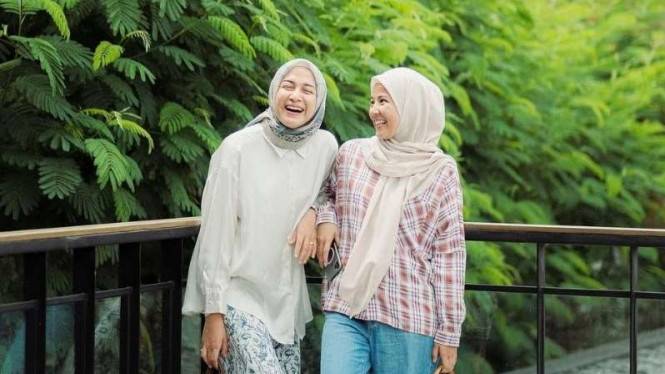Important like the term “ sustainable ”, “ regenerative ” is decreasingly used in vague ways in fashion marketing. For a garment to be truly regenerative, the raw accoutrements must have been tended without synthetic fertilisers or fungicides using ways that restore the health of the soil, ameliorate ecosystem functionality, water cycles and biodiversity.
A regenerative system provides better issues for the growers and communities along the force chain. But on a broader scale, regenerative husbandry has been described as integral to the future of fashion.
In the assiduity, the transition to regenerative fibre husbandry is only just getting under way, meaning regenerative fashion can be hard to find, and frequently, eye- wateringly precious – an unfortunate reality of sustainable force chains as they work to contend with fast- fashion business models. Then are some contrivers who formerly have regenerative garments in their collections.
Angel Chang
Made by indigenous crafters in the mountainous fiefdom of Guizhou in China, every garment produced by Angel Chang is regenerative. Her collection is made with native seed cotton that has been grown without chemicals and bepainted
with locally gathered indigo and gardenia.
Chang says her favourite piece “ is literally called my favourite shirt ”. The shirt is entirely handwrought the cotton is hand- spun into yarn also woven into fabric on a handloom, while the shirt is hand- sutured together.
“ The cotton is undressed and unbleached – so the oil painting of the seed is retained on the fibre and keeps the fabric soft, ” she says. “ By rigorously following the traditional processes( of the Miao and Dong ethnical nonage grandmothers) we’ve created apparel with a nearly zero carbon footmark. ”
A.BCH

Courtney Holm has worked considerably to produce truly low- or positive- impact apparel for her Melbourne- grounded markerA.BCH. The brand’s linen shirt is made from 100 global organic cloth standard pukka linen, grown in France by a philanthropy of organic- flax growers. Flax generally grows with minimum irrigation and when tended without chemical fertilisers and fungicides can be a carbon Gomorrah( that is, the flax shops can absorb further CO2 than they emit).
The first stage of recycling the linen is done locally. also the fibres are spun into yarn in Hungary and the yarns are transferred to Belgium where they ’re woven in a carbon neutral shop and paled with low- impact oxygen whiteners. “ Our Belgian linen supplier has been mulling linen since 1864 and are recognised by The Masters of Linen, ” says Holm.
From there, the linen is transferred toA.BCH’s Melbourne plant where it’s cut and sown into theA.05 linen shirt, a dependence of the marker’s collection since its launch in 2017. While the payload of fabric from Europe to Melbourne may feel like a lot of carbon emigrations for a low- impact garment, utmost fabric in the assiduity travels much farther to be converted from raw material to cloth, and presently, there’s no flax grown and reused in Australia.
Another Hereafter
“ We believe that impact starts at fibre, ” the CEO of New York- grounded marker Another hereafter, Vanessa Barboni Hallik, says. Take, for illustration, the tuxedo jacket, which forms part of her “ daily invariant ”.
The jacket is made with hair from a Responsible hair Standard pukka ranch in Victoria, Australia. RWS instrument requires granges to uphold the loftiest norms of beast weal, so no mulesing is allowed. growers must use progressive land operation ways that cover soil health, biodiversity and native species.
“ We’ve six granges now in our portfolio across Australia and New Zealand with deep commitments to biodiversity, carbon operation and extremely strict beast weal norms, ” says Barboni Hallik.
Maggie Marilyn
“ We love merino for its temperature- regulating parcels, its continuity, ” says Maggie Hewitt. The New Zealand developer is famed for integrating the loftiest norms of sustainability and traceability into her merino knitwear marker Maggie Marilyn. Her collection is made with ZQRX certified merino hair – that is, grown in New Zealand by directors whose husbandry ways restore aqueducts, cover native species, neutralize carbon, and enhance original communities.
For Hewitt, the instrument is notable for its ambition, and describes it as “ a measure beyond sustainability, where the end is nonstop enhancement – not a minimal standard. ”
KitX
Kit Willow, the author of Sydney grounded apparel marker KitX, is a colonist of sustainable fashion who describes hemp as a fibre of the future.
Hemp is an extremely flexible crop that grows with minimum irrigation and without synthetic fungicides or fertilisers. Because of its deep taproot system it can pull poisons from the soil, while exploration suggests artificial hemp can be doubly as effective than trees in sequestering carbon.
In the KitX collection, the “ hemp tee ” is made from a hemp- cotton mix fabric knitted in Melbourne and constructed in Sydney using Citizen Wolf’s zero- waste product technology.
Mara Hoffman
While Mara Hoffman’s headquarters are in New York, all their hair knitwear and accessories are made using “ climate salutary ” hair from Emigh estate in northern California.
The hair is part of a wider regenerative agrarian program by not- for- profit Fibershed. Mara Hoffman’svice-president of sustainability, produce and business strategy, Dana David, describes the main stakeholders of the action as scientists and community organisers who measure how fibre ecosystems acclimatize to and alleviate climate change. They’re concentrated on giving drovers and growers the tools demanded to exercise carbon husbandry; and to put in place land stewardship sweats similar as specified grazing, creating pollinator territories, restoring creeks and a host of husbandry ways known to support healthy soils.
“ These practices aid in sequestering carbon back into the soil and foliage, which removes carbon dioxide in the atmosphere, enriches the soil and helps to restore healthy ecosystems, ” says David. The hair from these geographies have been turned into a line of beautiful, soft knitwear for Mara Hoffman’s collection.


